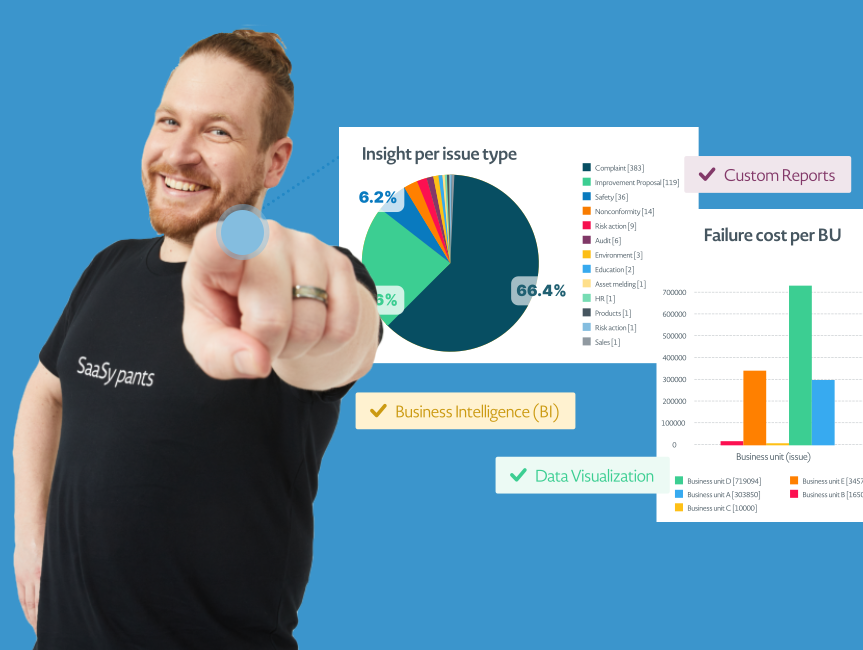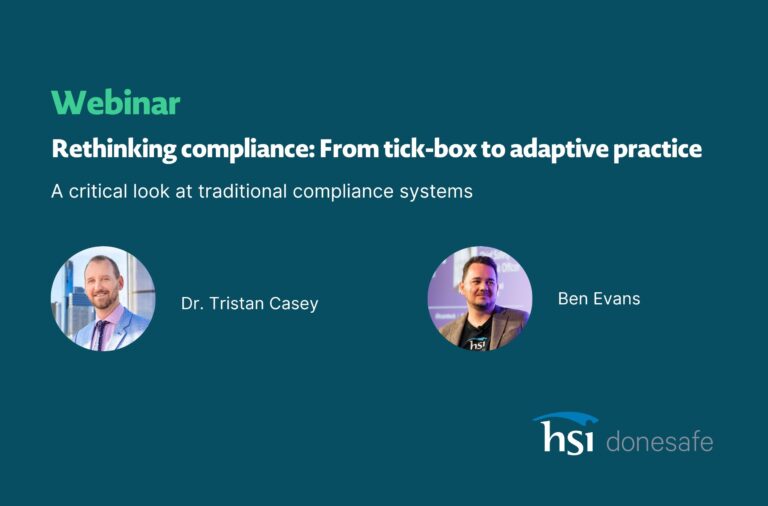
There are many benefits of deploying an Environment, Health & Safety (EHS) software platform for your business. Improved safety and quality standards lead to cost savings from reduced claims and waste. More efficient compliance management lowers the risk of fines. Better coordination, greater transparency, and the opportunity to gain deeper insights of how your business runs are all advantages of going digital. But one of the biggest transformations it offers is in how you accomplish EHS reporting.
Manual compiling of data is time-consuming and prone to errors. Many organizations still live in a world where spreadsheets, sticky notes, scribbled corrections, and what Dave has in his head are the basis for their EHS reporting. Not only is this potentially damaging should Dave leave the company, but it actually limits the opportunity for the data to be disseminated widely and used to improve all aspects of the business. A manual-based approach to data can create silos of information even within the same department.
The automation and digitization offered by a cloud-based EHS platform can greatly increase efficiency and accuracy in data reporting while also discovering innovative ways of mitigating the risks of non-compliance.
The challenges of manual processes
To see all the advantages of moving to an EHS software platform, let’s start by examining the realities of collecting, processing, and presenting data under your current system.
Spreadsheets. Decades of data audits and experiments have shown that 88% of all spreadsheets contain “significant” errors. Not only does research show that we’re prone to making mistakes but it also shows we’re bad at detecting them. When it comes to EHS reporting, an unnoticed error could have a huge financial impact from regulatory fines or penalties totalling hundreds of thousands of dollars. While a different sort of human error could result in the information being lost entirely. And it’s worth considering the security risks of this important company information just lying around on someone’s laptop.
Data quality. Spreadsheets demand multiple steps of data entry and review, making them far less efficient. Accuracy is, of course, paramount when it comes to EHS reporting, so going over the data multiple times is a huge time expense for your team.
Lack of connections. EHS encompasses a huge variety of data. This includes incident reporting, assessments, and tasks. Each of these areas may be handled by a different system and the information kept in a different database. This approach prevents getting a holistic overview of everything that happens. If you try and bring them together, you’re increasing workload by inputting data multiple times in multiple platforms. Once again, the opportunity for errors increases and the chances of tasks being forgotten, or deadlines missed, grows.
Data collection. Accurate EHS reporting relies on accurate data collection. This depends on frontline employees actively providing information on incidents, near misses, potential issues, and more. The more obstacles present that deter an employee from making a report, the less precise your data. If they have to jump through hoops to find a way to send a report, or fill out complicated forms by hand, you’re going to get degraded information.
The benefits of an EHS platform
A comprehensive approach will lower the EHS risks in your business in a fundamental way. It’ll improve processes, productivity, and profitability—at the same time it makes your EHS reporting more accurate and complete.
Better data. Deploying a well-designed EHS platform instantly improves data quality. Easy-to-use mobile interfaces enable every employee, no matter where they are, to conduct workplace safety inspections, audits, pre-start checks, ergonomic assessments, and so on.
End-to-end management. Automated actions allow you to proactively manage your risks. Reminders are sent until hazards are resolved. As you lower your risk, you’re gaining valuable information that you can learn from using powerful data analytics.
Streamlined claims management. Manage your injury, claim, and compensation in the same place as all your safety compliance.
Integrated training and inductions. The same platform can identify workers’ training needs, plan the required training, send reminders, and record participation.
Best practice EHS reporting
Achieving high-quality EHS reporting is becoming increasingly important in all industries, not only in response to regulators but also to satisfy investors. There are some key areas to consider to ensure your meet current expectations.
Appropriate definition of metrics and KPIs. It can be challenging to determine exactly which metrics you should be tracking. There are a large number of reporting frameworks to choose from and, while they have overlap, they have different opinions on what data and metrics matter most. It can be useful to look at what other organizations in your industry are focussing on and to discuss with stakeholders which issues are important to them. You might conduct surveys or speak with customers and investors. Once determined, you can match these issues with specific metrics and KPIs.
Multi-level reporting. EHS shouldn’t be run from the top down. To operate optimally, it relies on input from all levels of the organization. This is where an EHS platform with user-friendly interfaces makes reporting simple, while well-designed dashboards help everyone see what’s going on.
Real-time insights. Safety is undeniably improved when issues can be acted on quickly. EHS software provides actionable insights immediately, without the time lag caused by slow and complicated manual processes.
Leading indicators. Tracking these measurable variables will help you anticipate issues in the future. The goal of leading indicators is to enable you to act before an incident happens. Some of the metrics that fall into this category are:
• Near misses
• Minor injuries indicating chance of more significant injuries
• Hazard observations
• Regulatory compliance
• Training participation
• Training pass rates
• Employee safety initiatives
• Safety culture and engagement
Tracking these indicators allows you to significantly reduce the chance of a serious issue happening. It’s the old ‘prevention is better than cure’ approach.
Lagging indicators. These measurable variables tell you how you’ve performed in the past. They’re usually metrics that show how often certain events happen, how efficient your process is, or how much was spent on certain safety measures. When compared year by year, they can show where you’re improving and where you need to do more work. Included in this category are:
• Total Recordable Injury Frequency rate (TRIF)
• Days Away, Restricted, or Transferred rate (DART)
• Experience Modification Rate (EMR)
• Regulatory issues
• Workers’ compensation claims
• Missed training deadlines
These indicators give data-based direction on where to focus your attention. They track and measure the outcomes of your workplace safety system.
Transforming your approach to EHS
Deploying an EHS software platform will enhance every element of your safety program. It’ll prevent, predict, and reduce worker injury and claims. It’ll improve safety culture, empower employees, and ensure compliance with safety standards and regulations. At the same time, it’ll make EHS reporting far more efficient and far more accurate. In turn, giving you valuable insights that guarantee an impressive return on your investment.
You can find out what to look for in an EHS platform in our ebook—A Buyer’s Guide to Environment, Health & Safety Software. What you need to know to make the safe choice for your business.
Think Safety Done.
Think Donesafe!
Share:



